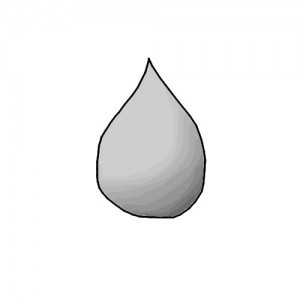The number of displaced populations living in protracted refugee situations and the duration of their displacement are growing. Response to a protracted crisis will usually start around 12 months after the beginning of the crisis and may last many years, sometimes requiring continuous humanitarian WASH interventions (EUROPEAN COMMISION 2014).
Many of the UN Refugee Agency’s (UNHCR) operations in Prolonged Encampments take place during the ‘care and maintenance’ phase of Camps and aim to ensure adequate water supply of sufficient quality in a sustained manner. Unlike in short-term camps, water supply in prolonged encampment settings must not only protect public health but must also meet additional demands for agricultural activities, livestock husbandry or small industry (CRONIN ET AL. 2008).
International humanitarian standards for water, sanitation and hygiene (WASH) interventions provided for prolonged encampments are based on The The Sphere Project Standards Minimum Standards which were formulated using the experience from camps:
- SPHERE, Water Supply Standard 1: Access and Water Quantity. All people have safe and equitable access to a sufficient quantity of water for drinking, cooking and personal and domestic hygiene. Public water points are sufficiently close to households to enable use of the minimum water requirement.
- SPHERE, Water Supply Standard 2: Water Quality. Water is palatable and of sufficient quality to be drunk and used for cooking and personal and domestic hygiene without causing risk to health.
- SPHERE, Water Supply Standard 3: Water Facilities. People have adequate facilities to collect, store and use sufficient quantities of water for drinking, cooking and personal hygiene, and to ensure that drinking water remains safe until it is consumed.
The focus of interventions in prolonged encampment settings should lie on cost-effectiveness, quality and durability of the service and/or the replacement of temporary services that are still in operation. Adequate Ensuring Appropriate Operations and Maintenance Services is vital to avoid the deterioration of the existing services. Focus should also be on increasing the self-sufficiency of the beneficiaries in prolonged encampments and on upgrading the quality of the services beyond the minimum standards.
The following guiding tools for water supply in Prolonged Encampments provide further information regarding water sources and distribution as well as water treatment. The environmental, technical, financial and social sustainability criteria of the individual situation must always be considered when upgrading or modifying existing technologies.
A review of water and sanitation provision in refugee camps in association with selected health and nutrition indicators – the need for integrated service provision
International Organization for Migration (IOM), Norwegian Refugee Council (NRC) and UN Refugee Agency (UNHCR)`s Camp Management Toolkit provide tools and approaches to provide concrete guidance on facilitating hygiene improvement in an acute, early stage of an emergency relevant to camps. This toolkit is applicable to both IDPs and refugees living in communal settings.
CRONIN, A. ; SHRESTHA, D. ; CORNIER, N. ; ABDALLA, F. ; EZARD, N. ; ARAMBURU, C. (2008): A review of water and sanitation provision in refugee camps in association with selected health and nutrition indicators – the need for integrated service provision. In: Journal of Water and Health: URL [Accessed: 26.10.2016]Water, Sanitation and Hygiene. Meeting the challenge of rapidly increasing humanitarian needs in WASH. DG ECHO Thematic Policy No.2
This thematic policy document provides information on meeting the challenges of rapidly increasing humanitarian needs. It provides information on basic principles of humanitarian response, emergency response and preparedness and response in acute, post-acute, protracted, and chronic crises, key determinants for interactions, guidance on coordination, advocacy, decision trees, and technical guidelines. It provides various insights on operations and maintenance planning for humanitarian crisis needs. The EC humanitarian WASH assistance follows the following objectives: 1) To ensure timely and dignified access to sufficient and safe WASH services for populations threatened by on-going, imminent or future humanitarian crises, and to increase their resilience to withstand water stress and shocks. 2) To implement measures to prevent the spread of WASH related diseases in populations threatened by on-going, imminent or future humanitarian crises. 3) To enhance the impact, relevance, efficiency and effectiveness in the delivery of WASH assistance by strengthening the capacities of the humanitarian aid system, including its coordination mechanism.
EUROPEAN COMMISSION (2014): Water, Sanitation and Hygiene. Meeting the challenge of rapidly increasing humanitarian needs in WASH. DG ECHO Thematic Policy No.2. Brussels: European Commission URL [Accessed: 31.10.2016]The Sphere Handbook
This appendix of SPHERE handbook is a water supply and sanitation initial needs assessment checklist. This list of questions is primarily for use to assess needs, identify indigenous resources and describe local conditions. It does not include questions to determine external resources needed in addition to those immediately and locally available.
THE SPHERE PROJECT (2011): The Sphere Handbook. Rugby: Practical Action Publishing URL [Accessed: 19.10.2016]

